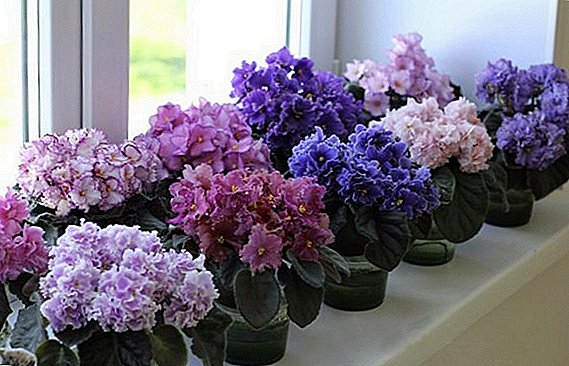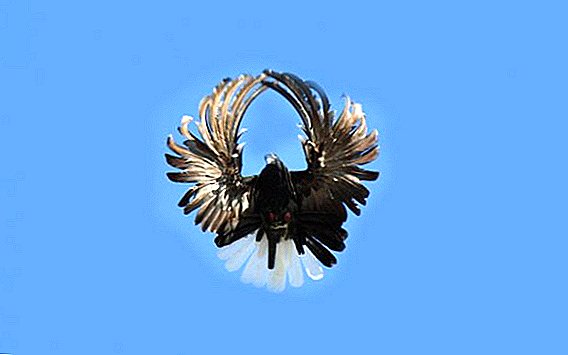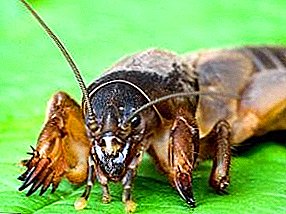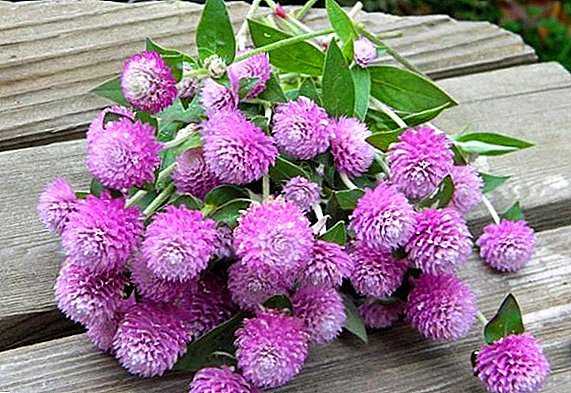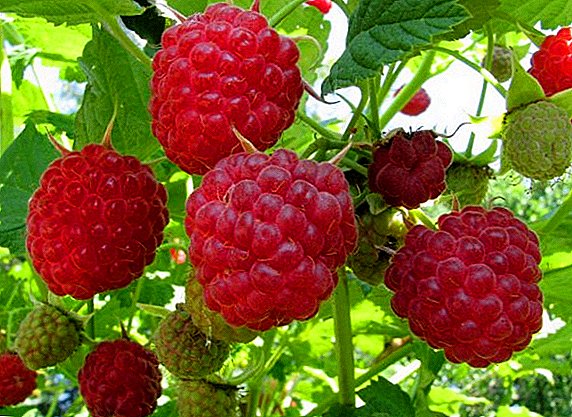 Raspberries can be called one of the most useful and valuable berry crops. It has many important therapeutic and nutritional properties, and the people are considered a symbol of longevity and good health. It is not surprising that in our time, there is simply a mass of recipes based on it. During the existence of this culture, a huge number of varieties were bred. Characteristics of raspberry varieties consist of ripening time, yield, resistance to disease, taste and other nuances related to the development of culture. Different varieties are adapted to different climatic conditions, so it is important to know what kind of raspberries to plant in your garden. Next, we take a closer look at the best varieties of raspberry, early, medium, and late ripening.
Raspberries can be called one of the most useful and valuable berry crops. It has many important therapeutic and nutritional properties, and the people are considered a symbol of longevity and good health. It is not surprising that in our time, there is simply a mass of recipes based on it. During the existence of this culture, a huge number of varieties were bred. Characteristics of raspberry varieties consist of ripening time, yield, resistance to disease, taste and other nuances related to the development of culture. Different varieties are adapted to different climatic conditions, so it is important to know what kind of raspberries to plant in your garden. Next, we take a closer look at the best varieties of raspberry, early, medium, and late ripening.
Raspberry varieties of early ripening
Raspberries, especially early varieties, often have low yields. But this lack of plant compensates for other advantages. For example, early raspberry varieties are fairly resistant to the most unpredictable weather conditions, so they are perfect for growing in regions where weather conditions tend to change dramatically.
"Balm"
This variety was bred by crossing the raspberry "Rubin Bulgarian" and "Newburgh" and is a sprawling, erect bush, up to 1.8 cm in height. It is capable of creating up to 20 shoots per meter. Thorns in the bush are brown, short and hard. Ripening - average. The harvest from one bush is not too big, and its maximum value is 2.5 kg. Variety "Balsam" has large, dense, dark purple berries that can be easily separated from the stem. It belongs to the frost-resistant varieties, which can be grown in almost any climatic conditions. 
"Sputnitsa"
Raspberry varieties "Sputnitsa", obtained by crossing varieties "Ottawa" and "Ruby Bulgarian", therefore, in the description of this variety there are many common details. With a late term ripeningIt gives a good yield and about 2-2.5 kg of berries can be harvested from one bush. "Sputnitsa" is characterized by an upright, strong bush, reaching a height of 1.8 m and a low ability to create shoots (up to 10 shoots per meter are usually accounted for). Thorns in the bush are located on the ground. They are short, thin and tough, and have a purple color. This variety is hemispherical, medium-sized, dark red berries. Frost resistance is average, which is why there is a high risk of the bark drying out. The variety is resistant to anthracnose and spider mites, however there is the likelihood of being affected by purple blotch. 
"Scarlet Sails"
Raspberry variety "Scarlet Sails" refers to the bushes of early ripening. They have quite strong shoots that can grow to a height of 2 meters. It creates sprouts well, there can be more than 10 of them on one bush. The variety “Scarlet Sails” has a rather low yield - only 1.5 kg of raspberry from one bush. The berries have a rounded-conical shape, and they get bright color closer to autumn. Frost resistance is good, and during severe frosts, raspberry fruits are formed by the axillary buds. Like many other summer raspberry varieties, this variety can get a spider web or raspberry mite, but at the same time it is highly resistant to fungal diseases.
"Abundant"
 The variety "Abundant" belongs to the large-fruited raspberry varieties. A strong, semi-sprawling bush grows to 2 meters and does not have thorns. This raspberry is quite fruitful and up to 4.5 kg of berries can be harvested from one bush of this variety. It has very large fruits, they have a conical shape, and the color is bright red, brilliant. From the stem are separated easily. "Abundant" easily tolerates frosts and copes well with various diseases.
The variety "Abundant" belongs to the large-fruited raspberry varieties. A strong, semi-sprawling bush grows to 2 meters and does not have thorns. This raspberry is quite fruitful and up to 4.5 kg of berries can be harvested from one bush of this variety. It has very large fruits, they have a conical shape, and the color is bright red, brilliant. From the stem are separated easily. "Abundant" easily tolerates frosts and copes well with various diseases.
"Cascade"
This raspberry variety was formed as a result of the crossing of the Kaliningrad and Rubin Bulgarian varieties. Bush at the "Cascade" srednerosly, and its maximum height of about two meters. The leaves of this variety are medium in size, pubescent on top, green, whitish, densely pubescent from below. The ability to create shoots is average. It has thin, short, not very hard spikes, which are located along the shoot along its entire length. With proper care, you can achieve good yields - 3.5 kg from one bush. The berries of this raspberry variety are large, red, blunt-shaped. They are highly resistant to frost, but do not tolerate drought. Fungal diseases do not suffer, although it may hurt mosaic leaf spot. 
Description of varieties of medium ripening
Raspberry varieties of medium ripening are most suitable for growing at the dacha. They bear fruit quite early, have good yields, are unpretentious in their care and have a fairly good immunity.
"Brigantine"
 The variety of the average ripening period "Brigantine" is characterized by an erect shrub reaching a height of two meters. The ability to create shoots is medium (up to 20 shoots per meter). Medium, corrugated leaves have a dark green color. Also on the bush there is a small amount of short, thick, purple thorns. This raspberry variety gives a rich harvest and you can pick up to 2.5 kg of berries from one bush. Fruits are rounded-conical shape, large, dark crimson color. "Brigantine" - a variety resistant to frost and bark vyprevaniya, not prone to spider mites, anthracnose, as well as to purple spot.
The variety of the average ripening period "Brigantine" is characterized by an erect shrub reaching a height of two meters. The ability to create shoots is medium (up to 20 shoots per meter). Medium, corrugated leaves have a dark green color. Also on the bush there is a small amount of short, thick, purple thorns. This raspberry variety gives a rich harvest and you can pick up to 2.5 kg of berries from one bush. Fruits are rounded-conical shape, large, dark crimson color. "Brigantine" - a variety resistant to frost and bark vyprevaniya, not prone to spider mites, anthracnose, as well as to purple spot.
"Tarusa"
The raspberry variety "Tarusa" has the following description: the bushes reach 1.5 meters in height and are characterized by a high ability to create shoots (up to 10 shoots and up to 5 root shoots per meter). This raspberry has large, corrugated leaves, dark green in color, with furrows along the edges. If you are looking for the most fruitful raspberry varieties, then Tarusa is able to produce up to 4 kg of berries, and with careful care, the yield can double. It has rather large, dull-conical, brightly red fruits that can be easily removed from the stem.  The taste of raspberry varieties "Tarusa" is sweet and has a strong raspberry flavor. It does not freeze to -30 ° C, however, if the temperature drops even lower, it is recommended to bend the shoots to the ground and cover with snow. It is best to bend them closer to the end of September, along with the leaves. As for various pests and diseases, the raspberry "Tarusa" has a rather high resistance.
The taste of raspberry varieties "Tarusa" is sweet and has a strong raspberry flavor. It does not freeze to -30 ° C, however, if the temperature drops even lower, it is recommended to bend the shoots to the ground and cover with snow. It is best to bend them closer to the end of September, along with the leaves. As for various pests and diseases, the raspberry "Tarusa" has a rather high resistance.
Hercules
Raspberry "Hercules", and the description of this variety should begin with its incredibly strong shoots, for which he got his name - this is a medium-growth bush reaching two meters in height. Creates a total of 4 shoots (one bush). They are straight, strong, green. The fruiting area of this variety takes half of the shoots. It has medium, wrinkled, bright green leaves. Thorns - sharp, thin, hard and cover the entire shoot. The yield of the bush is quite high and can reach 3 kg. The berries are truncated conical, very large, ruby-red color. If sweet raspberry varieties are too cloying for you, then Hercules has a pleasant sweet-sour taste. With frequent frosts, it has an average resistance to frost, so it is best to cut and cover shoots for the winter. This type of raspberry is not inclined to diseases. 
"Aborigine"
Large raspberry varieties are quite diverse, and the "Aborigine" is not their only representative. Its strong, slightly sprawling, straight-growing, bushes without thorns are able to grow up to 2 meters in height, and thanks to high yields, up to 7 kg of berries can be collected from one such bush. The fruits have a conical shape, rather large, bright red. Frost resistance varieties "Aborigine" - the average. 
"Arbat"
Arbat is a large-fruited raspberry variety. The bush has strong, high shoots, without thorns. Yield "Arbat" is impressive, because with one bush you can collect 6 kg of raspberry, and with proper care, the amount of harvest often doubles. The berries are large, conical in shape, dark red in color, easy to detach from the stem. This variety is characterized by medium frost resistance and low susceptibility to diseases.
Late raspberry varieties
Raspberries also have late varieties. They are distinguished by high yields and are highly resistant to frost. The following are the most common varieties for planting in the country.
"Taganka"
The raspberry variety "Taganka" refers to the varieties of late ripening periods and is represented by medium-length shrubs without thorns. The yield of this variety is quite high and with proper care from one bush can collect up to 5 kg of berries. The fruits of this raspberry are large, red and have a conical shape. The consistency they are quite dense. Winters "Taganka" is not particularly afraid, but with severe frosts can freeze. Also has high immunity to diseases. 
"Stolichnaya"
The raspberry variety "Stolichnaya", is represented by strong, erect, medium-length shrubs without thorns. This variety is characterized by a low ability to create shoots, although the yield of raspberries is quite high and up to 4 kg of berries can be harvested from one bush. Fruits are long, fairly large, painted red. With the stem removed easily. This raspberry variety is highly resistant to frost and is characterized by a low risk of disease.
"Kirzhach"
"Kirzhach" - medium-ripening raspberry variety. He managed to get by crossing raspberry varieties "Carnival" and "Promis". Quite a tall bush, the maximum height of which can reach 2.5 meters. He is strong, straight, well developed. The ability to create shoots is high, and up to 25 shoots can be per meter. Also, it should be noted, and high yields. "Kirzhach" is characterized by the presence of medium-sized red fruits, with a wide blunt-conical shape. It is moderately resistant to frost and thaw, although there is a risk of being infected with a raspberry beetle or root cancer. 
"Mirage"
To the bushes of late ripening include such a raspberry variety as "Mirage". These are medium-growth bushes that have a good ability to create shoots (there are up to 11 shoots per bush). Two-year-old raspberry stalks have soft, straight, small spikes of gray color, located throughout the shoot. Fruit branches of this variety are well branched. The yield of raspberry "Mirage" is medium, the fruits are long and large, painted red. This variety suffers from frost, so it is not recommended to grow it in places where the temperature often drops below zero. The advantage of the plant is a good immunity, which allows not afraid of pests and diseases.




